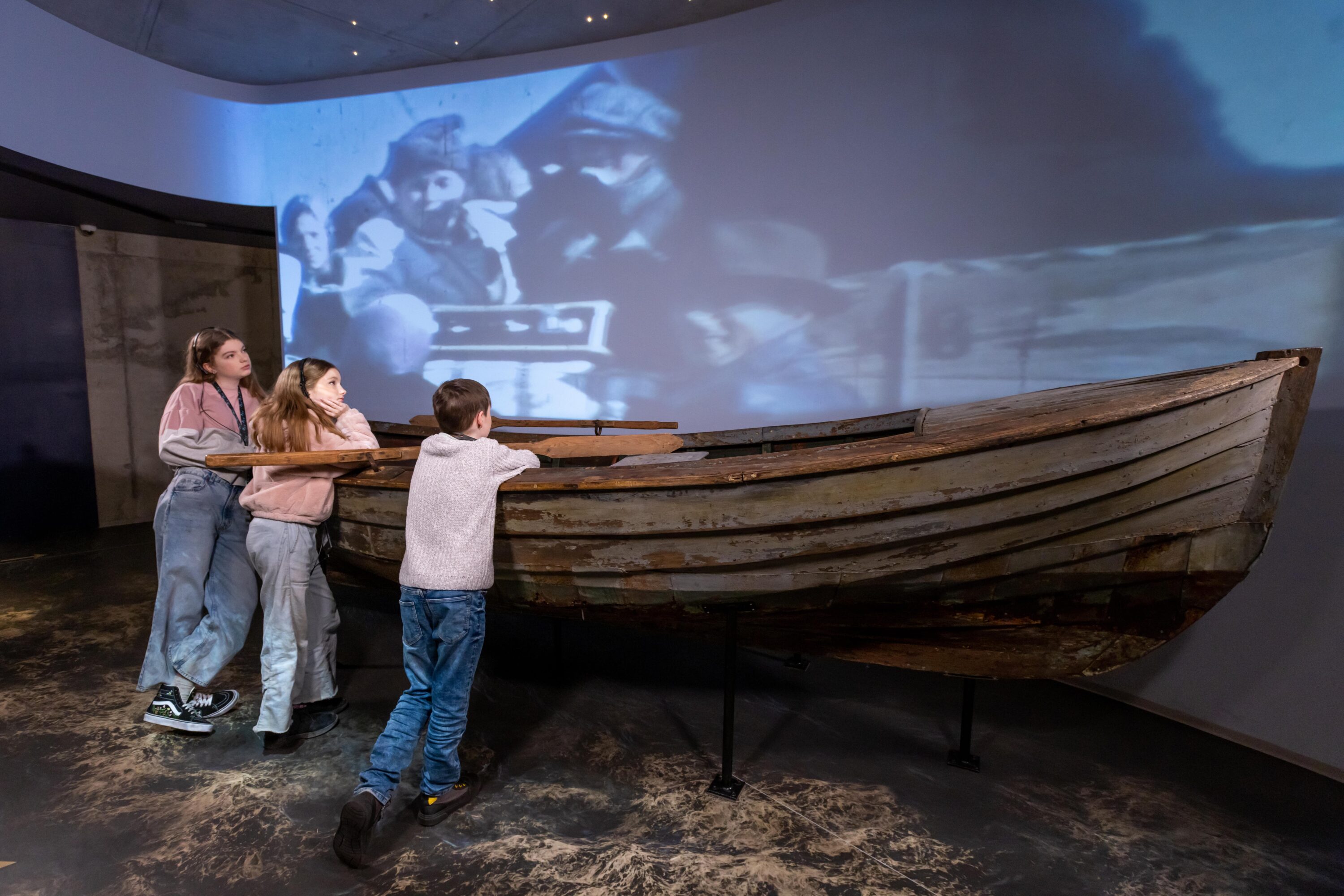- Püsinäitused
Vabadusel ei ole piire
Vabamu 2018. aastal avatud püsinäitus kõneleb Eesti ajaloost viimase aastasaja jooksul, kui eestimaalased on korduvalt kogenud vabaduse haprust. Meie vabadust – nii vaimset kui ka füüsilist – on proovitud kord rohkem, kord vähem kärpida ja piiridesse suruda. Aga meie kogemus näitab, et vabadust ei saa piirata, vabadusel ei ole piire. Inimeste vabaduseiha on tugevam kui ükskõik millised köidikud.

Okupatsioonidest, vastupanust, taastamisest ja vabadusest kõnelev näitus „Vabadusel ei ole piire” koosneb viiest osast: „Ebainimlikkus”, „Eksiilis”, „Nõukogude Eesti”, „Taastamine”, „Vabadus”.
Ebainimlikkuse osa vaatab tagasi meie lähiajaloo hetkedele, kui inimlikkuse põud kummitas kõiki siin elavaid inimesi.
Näituseosas Eksiilis jutustavad esemed ühes visuaalsete ja graafiliste elementidega eestlaste lugu piiri taga, paguluses, kuhu jõudsid kümned tuhanded inimesed Teise maailmasõja jooksul.
Nõukogude Eesti elule keskenduv näituseosa jaguneb kaheks. Esmalt käsitleme nõukogude korra kehtestumist ühes indiviidi ees seisnud ideoloogiliste valikutega. Teine suurem teema on nõukogude inimese argipäev koos selle kultuuriliste kurioosumitega.
Iseseisvuse taastamise korrus käsitleb laulva revolutsiooni ja iseseisvuse taastamise aega 1987. aasta fosforiidisõjast kuni Eesti astumiseni Euroopa Liitu 2004. aastal. Ekspositsiooni keskmes on kaheksa inimest, keda ajalooraamatutest ei leia.
Vabaduse osa vaatab vabadust kui pingeseisundit, milles tuleb leida tasakaalu keskpunkt vabaduste ja kohustuste vahel.
Püsinäituse loomisse olid kaasatud spetsialistid nii oma majast kui ka väljastpoolt. Inimsusevastaste kuritegude teemaruumi kuraator on Sander Jürisson. Teise maailmasõja aegset põgenemist ning eestlaste elukäiku paguluses avab Tallinna Ülikooli doktorant ja nooremteadur Maarja Merivoo-Parro. Nõukogude Eesti elu käsitleva ala kuraator on Tallinna Ülikooli lektor PhD Uku Lember. Iseseisvuse taastamisele keskenduva näituseosa koostas Oxfordi ülikooli järeldoktorant PhD Aro Velmet. Vabaduse teemaruumi sisu lõid kommunikatsiooniekspert Daniel Vaarik ja kunstnik Kaido Ole. Muusikalise kujunduse sisehoovi lõi muusik Taavi Tulev.
Teekonnale viib e-giid
Teekonnal läbi muuseumi on külastaja saatjaks spetsiaalselt meie püsinäitust silmas pidades välja töötatud e-giid, mis viib kaasavale ja mõtisklevale rännakule lähimineviku radadel.
E-giidi pakume üheksas keeles (eesti, vene, inglise, soome, saksa, prantsuse, hispaania, läti, leedu). Giiditekstid on loonud dramaturg Eero Epner.
Lastega muuseumisse
Muuseumis on ka tegevused lastele, mis pakuvad meeldejäävat ja põnevat kogemust tervele perele. Tegevuslehe – ja paikade ning e-giidi abil räägime kaasakiskuvatel teemadel lugusid eri vanuseastmetele. Peretasandi loomisel on meile abikäe ulatanud Tallinna Ülikooli kasvatusteaduste doktorant Sireli Uusmaa.
Peretasand pälvis 2019. a muuseumiauhindade jagamisel aasta muuseumihariduse edendaja tiitli.
Ekskursioon püsinäitusel
Soovi korral saab püsinäitusega tutvumiseks tellida ka eskursiooni. Ekskursioon kestab sõltuvalt soovist, kas 60 või 90 minutit ning osaleda saab kuni 25 inimest.
Ekskursioonide hinnad:
60/90 min eesti keeles 45/55 €
60/90 min võõrkeeles 55/65 €
Lisandub muuseumipilet.

 Tagasi
Tagasi